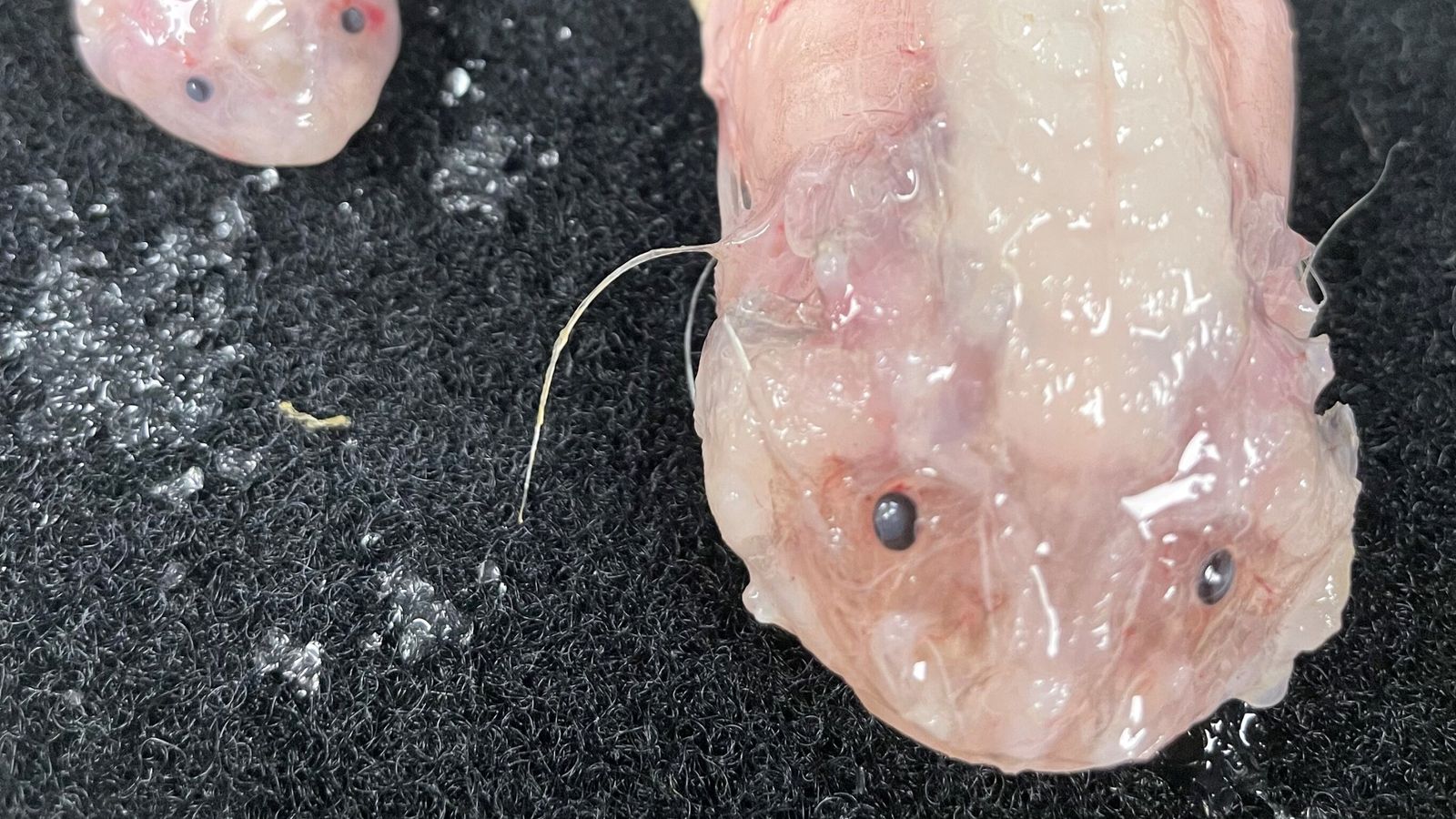Scientists have set a new record for the deepest fish ever caught on camera – as well as the deepest catch ever made.
The juvenile fish – a type of snailfish – was filmed swimming at 8,336m (27,349ft) in the Izu-Ogasawara Trench, south of Japan.
The previous record – also a snailfish – was recorded at 8,178m (26,839ft) in the Pacific’s Mariana Trench in 2017.
The Mariana Trench is home to the deepest point in any sea on earth at a maximum depth of approximately 10,935m (35,876ft).
But scientists leading the research in the Izu-Ogasawara Trench believe their discovery could be at – or close to – the maximum depth any fish can survive.
Professor Alan Jamieson, who is a researcher at the University of Western Australia in Perth, said he believes the fish can live at such depths in the Izu-Ogasawara Trench because of its slightly warmer waters.
He said: “We have spent over 15 years researching these deep snailfish; there is so much more to them than simply the depth, but the maximum depth they can survive is truly astonishing.”
“In other trenches such as the Mariana Trench, we were finding them at increasingly deeper depths just creeping over that 8,000m mark in fewer and fewer numbers, but around Japan they are really quite abundant.”
Though the fish filmed by researchers were not caught to be fully identified, scientists did trap snailfish slightly higher up at 8,022m (26,318ft) – another record.
Read more:
Scientists discover three new species of snailfish
Quest to find rare marine life in the deep ocean
Snailfish are found in oceans across the world, with more than 300 different species currently known, many of which live in shallow waters.
They are described as being tadpole-like in shape, with larger heads and slender bodies.
The species adapted to living in deeper waters can withstand the huge deep-sea pressure with the help of their gelatinous bodies.
Click to subscribe to ClimateCast with Tom Heap wherever you get your podcasts
Professor Jamieson, who is the founder of the Minderoo-UWA Deep Sea Research Centre, worked with a team from the Tokyo University of Marine Science and Technology on the two-month expedition, which began in September last year.
Be the first to get Breaking News
Install the Sky News app for free
The expedition, which also involved looking at the Ryukyu trench, along the southeastern edge of Japan’s Ryukyu Islands, is part of a 10-year study into the deepest fish populations in the world.









